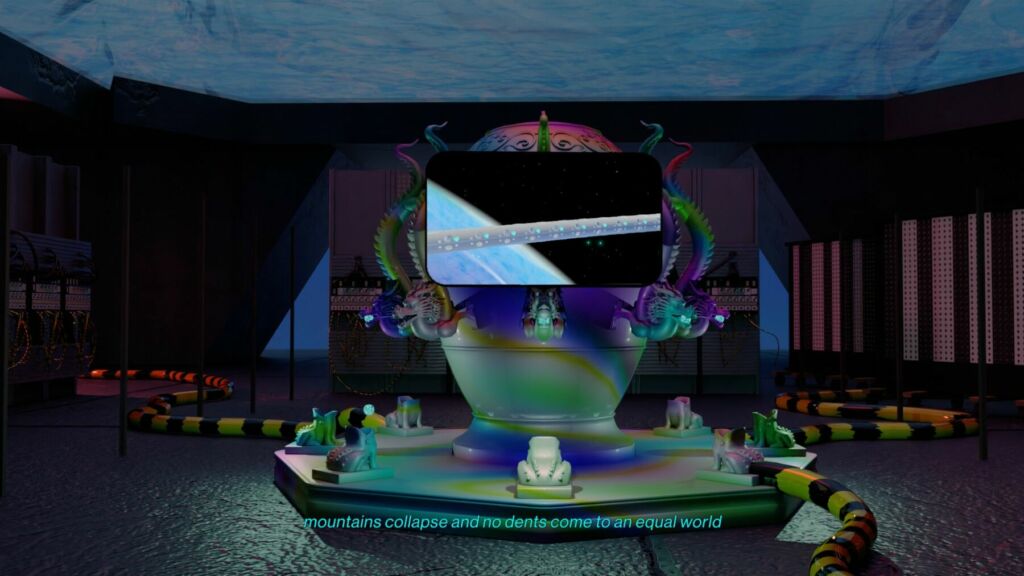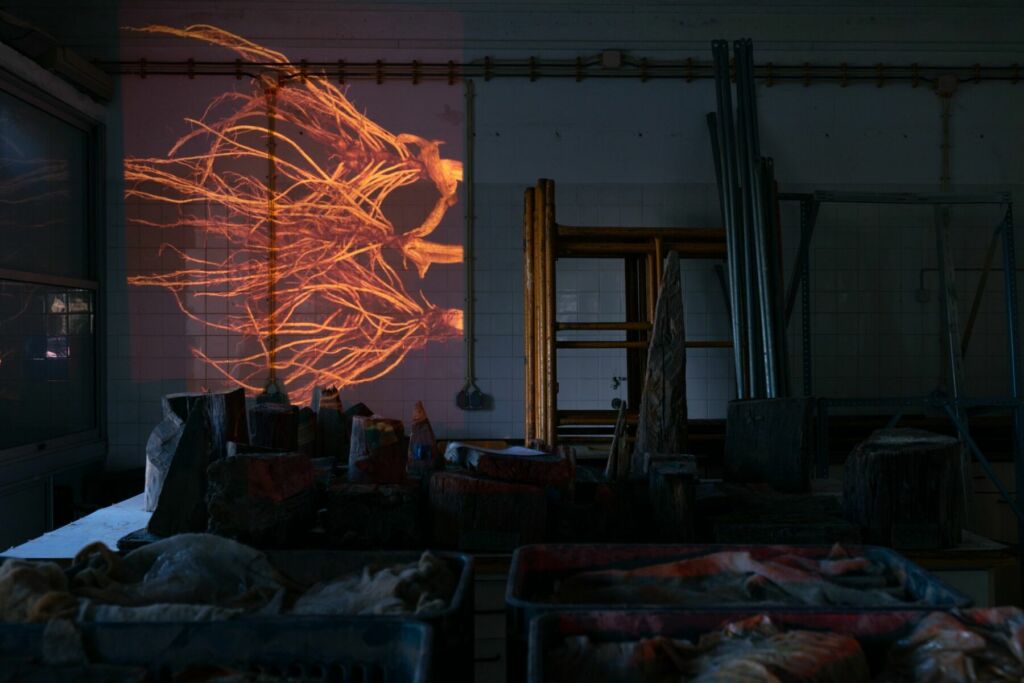Text by Juliette Wallace

Once considered limited to the therapist’s chair or the playground, the word empathy is now taking its place in the common vocabulary of the creative as a key focus of today’s multi-disciplinary artistic output. Empathy is a sophisticated form of understanding through self-reference. It accesses the action of looking inwards in order to see outwards.
Empathy exists on the basis that we all have shared experiences, and these can inform what we don’t yet understand. It is not limited to humans, although our species is the most well-versed at using it. The universal understanding of an impending threat to our planet has pushed this emotion to the fore in a communal desire to re-jig our solution process to tackle the somewhat unsettling future. Bienal’23 Porto: Acts of Empathy has understood the importance of empathy, dedicating its entire program to it.
Through 70 artists and 14 curators from 27 countries, this broad and exciting photography biennale, now in its third edition, has broken down the big questions of the world into 4 categories: SUSTENTAR, VIVIFICAR, CONECTAR, EXPANDIR (Connect, Expand, Sustain and Vivify). Each of these has been interpreted and represented across 14 locations around Portugal’s second-largest city by the event’s innovative and eclectic group of contributors.
The masterminds behind this ambitious happening, co-artistic directors Jayne Dyer and Virgílio Ferreira (who also curated a handful of the exhibitions in the program), have used the power of communication and cross-communication to tackle the empathy question, proposing solutions to our future and questioning methods of the past.
We see Acts of Empathy as a powerful action statement – doing something concrete to reach out towards one another with sensitivity and reciprocity. The Bienal’23 title provides a framework in which all participants are offered space to listen and observe alternative ways of thinking and behaviour, to more fully embrace different points of view, thoughts and feelings, a deep dive into emotional connectedness as a way to act.
The challenge of working with such a large group of participants and connecting them is no small one. In honour of the event’s theme, Dyer and Ferreira jumped at the opportunity to put their money (or their brains) where their mouth was and made ‘communication’ and ‘understanding’ both their subject and their method.
Stretching beyond human interconnectivity, Bienal’23 Porto looks at ways to communicate across species and ecosystems whilst at the same time challenging the common format of a biennale: Since its inception, we have interrogated conventional Bienal models in the ways participants, content and delivery interconnect and perform. Bienal’23 is built on the principle of a rhizomatic ecosystem of hyperconnectivity between all players – artists, curators, producers, mediators, invigilators, moderators, hosts, communities, cultural, industry and community organizations and partners. This matrix enables participants’ strategies and tools to re-think their roles and join together to address planet sustainability.
In order for the whole to work, each part has to be carefully chosen. The selection process was carried out according to specific criteria, as the co-directors put it: the curators and artists were chosen for their aesthetic, conceptual and contextual specificities to respond to each of the platforms. In-keeping with the event’s message, the selection of the 4 platforms was key as, not only did they need to connect and communicate between each other, but they acted as a means by which to determine who and what would be a part of this artistic happening as a whole.
The unification and exploration of these topical umbrellas is key to the event’s success and, possibly, a source for solutions to our future. The Bienal’23 four platforms are core determinants that foster an inclusive collective approach to realise a regenerative future – «VIVIFICAR» to socially and ecologically live and stay, «SUSTENTAR» to sustain, «CONECTAR» to connect and «EXPANDIR» to expand. Each exhibition in each platform is developed in connection with and in relation to other platforms. Whilst each platform is different, the art medium used is the same across the board.



Photography is king as has been the case for the previous two Bienal’ Portos. This particular art practice has a specific duality, a double-exposure, if you will, that is interesting in the context of Acts of Empathy and its 4 core platforms. Photography is unique in its ability to capture moments “as they are” and present facts to the world (hence they are used as evidence in court cases). However, the photographic medium is not limited to “fact-capturing” and can also be interpretative. In the context of an event about empathy as a means to deal with the undeniable, this medium seems particularly fitting.
Photography and video are powerful mediums that can capture and convey a wide range emotions and information. While they offer a glimpse into reality, they can also be used to interpret events in different ways, to present a particular narrative or point of view, or emphasise certain features over others. While some artists may choose to develop their photography and video projects as evidence of a particular subject, others may use the medium to express a more interpretive, subjective and emotional perspective. In contrast, some artists mix the two approaches. The duality of photography and video as a medium of fact and interpretation can activate a deeper connection between the artists and their audience. Images can encourage viewers to engage with the work on a more personal level, reflecting on their own experiences and emotions related to the acts of empathy.
As well as being the co-artistic directors of the Bienal’23 Porto, Dyer and Ferreira were also responsible for the individual curation of some of the event’s shows, including Speculative Ecologies, one of the 16 exhibitions that make up Acts of Empathy. This satellite of the Bienal’23 Porto explores the dethroning of humans from our perceived central role as a proposal for new systems. Speculative Ecologies posit alternative hypotheses to interpret and value what we have and what we can very soon lose.
Dyer and Ferreira worked together to select and connect the works of four international photographers, Eliana Otta, Hyeseon Jeong, Seongmin Yuk, and Ursula Biemann, to breach this subject from various angles. Against the rapid deterioration in the conditions of all life on earth, Speculative Ecologies meditates on the probabilities of interconnection, repair and transformation. Starting from the redefinition of the human “self” as a cell in a diverse ecosphere of cells, we as humans become an “ecological self” in nature, as an integrated part of a complex system of diverse ecologies, behaviours and intelligences.
Interlacing indigenous and scientific knowledge to exist in the world, the exhibition interrogates relationships between humans and non-humans, resorting to different technologies in the reading of inter-species communities and the ties that sustain them. Swiss artist Ursula Biemann, Korean artist duo Hyeseon Jeong, and Seongmin Yuk, and Peruvian artist Eliana Otta offer three different yet entwined provocations on our global present and what may unfold.
Other exhibitions that makeup Acts of Empathy include: Black/White/Green – a critical reflection on the Ecology of the Image and the perspective of design criticism as demonstrated through the ecologically produced works of artists Rita Leite and Yasmine Moradalizadeh; Inter-relationships (also curated by Dyer and Ferreira) – a show that looks at the opposing forces of disadvantage and empowerment through the portraiture works of Matilde Viegas and Uwa Iduozee (whose contribution has the intriguing title of Not Yet, but I like painting); and imagem em idevir – an exhibition curated by José Maia that explores body politics in the context of an inhabited space through performance and transdisciplinarity in photography and the plastic arts.
Each platform within Acts of Empathy has, in turn, a sub-topic that tackles the challenges we face today and those we will be facing tomorrow. There’s an important message in this year’s Porto Bienal’, one which can be applied on both the large and the small scale. It seems fitting to end this article with the words of Dyer and Ferreira in response to the question of what they learnt from this challenging and inspiring process: empathy matters!






